Watch the Moon Waltz, Wobble and Eclipse the Sun with Mobile Apps
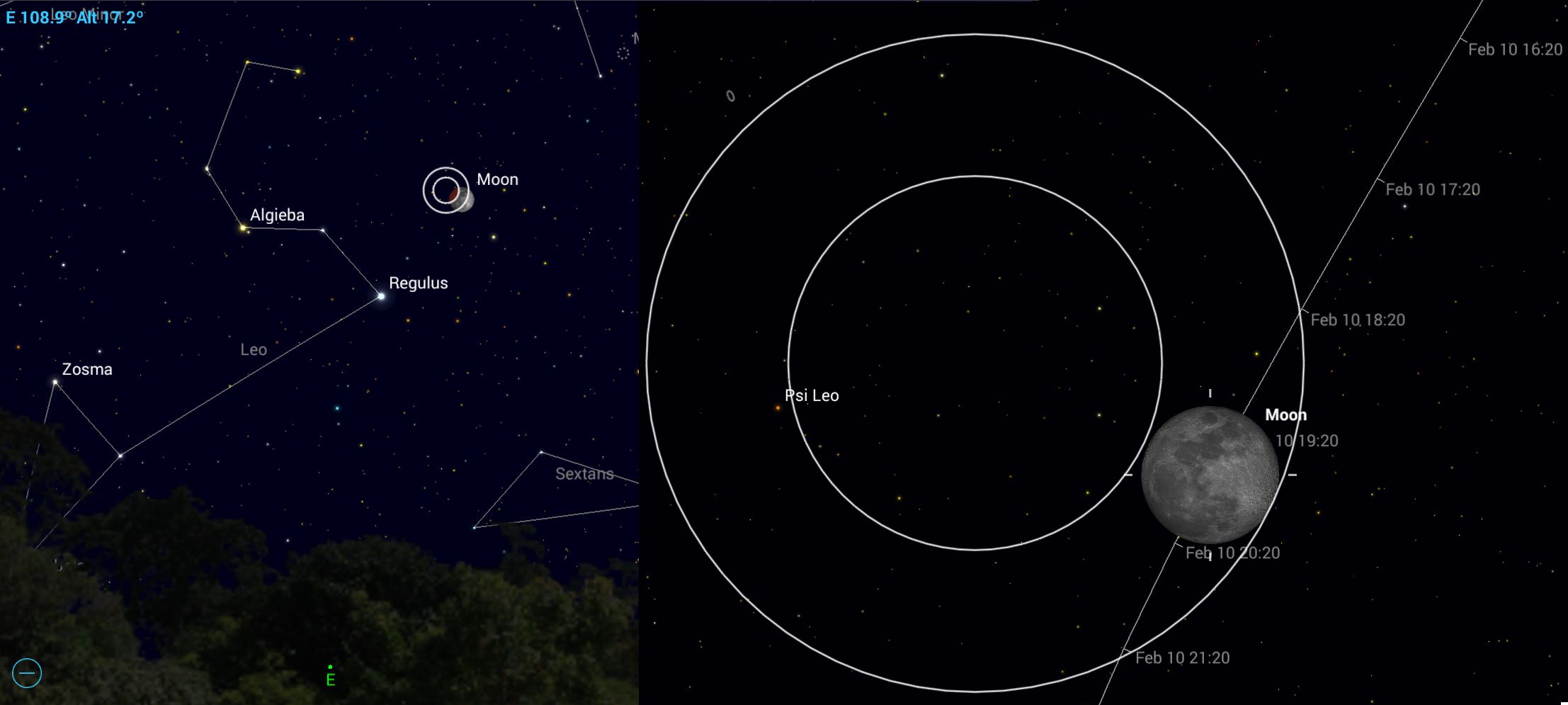
The phases of the moon follow from the way its sphere is illuminated by sunlight, which arrives from different directions as the moon orbits Earth. But the moon also performs a complex dance that makes it shrink and swell in apparent size, wobble to and fro, and nod up and down. In the same way a plant's growth can be captured in a time-lapse video, we can see the moon's motions by speeding up time using our favorite mobile astronomy apps.
From time to time, the moon dips into Earth's shadow or passes in front of the sun, producing eclipses. February 2017 will have two unusual eclipses — one lunar and one solar. The total solar eclipse of Aug. 21, 2017, which will cross the continental United States, will also have a corresponding lunar eclipse two weeks beforehand. In this edition of Mobile Astronomy, we'll take a look at the waltz and wobbles of the moon, and see what causes eclipses.
The moon's orbit makes it super sometimes
The moon orbits Earth every 27.3 days in an ellipse that brings it closer and farther away, once each per orbit. The mean distance between the two bodies is 238,856 miles (384,401 km). At apogee, the moon's maximum distance from Earth, it is 31,200 miles (50,200 km) farther away than at perigee, the moon's closest approach. This difference is enough to produce a 14 percent increase in apparent size between the two extremes. When a full moon happens within hours of perigee, it appears larger and up to 30 percent brighter, than a full moon that happens near apogee; the extra large and bright moon in that situation is widely described as a "supermoon." Astronomers call these events perigee-syzygy moons. [How the 'Supermoon' Looks (Infographic)]
The phases of the moon depend on the angle made by the sun, moon and Earth. But because Earth is also moving around the sun, the moon's phases repeat every 29.5 days, instead of the 27.3 days of its orbital period. The difference in the two intervals causes the moon's phases and the perigee and apogee dates to be out of sync most of the time. But every 14 months or so, the two cycles match up, generating a supermoon. Sometimes we get a series of two or three supermoons in a row, as we did in 2016, because the synchronization takes a few months to build up and taper off. The next supermoons occur on Dec. 3, 2017, and Jan. 2, 2018.
With an astronomy app such as SkySafari 5 or Stellarium Mobile, you can see the upcoming supermoons and watch the moon growing and shrinking every month. Just center the moon in your smartphone's field of view, and zoom in until it nearly fills the display. Then, advance the date continuously and watch the moon's apparent size vary. You may wish to use the app's Settings menu to switch off the ground and daylight for this. Your app might show the moon tipping left and right, representing how all objects rotate clockwise as they cross the sky.
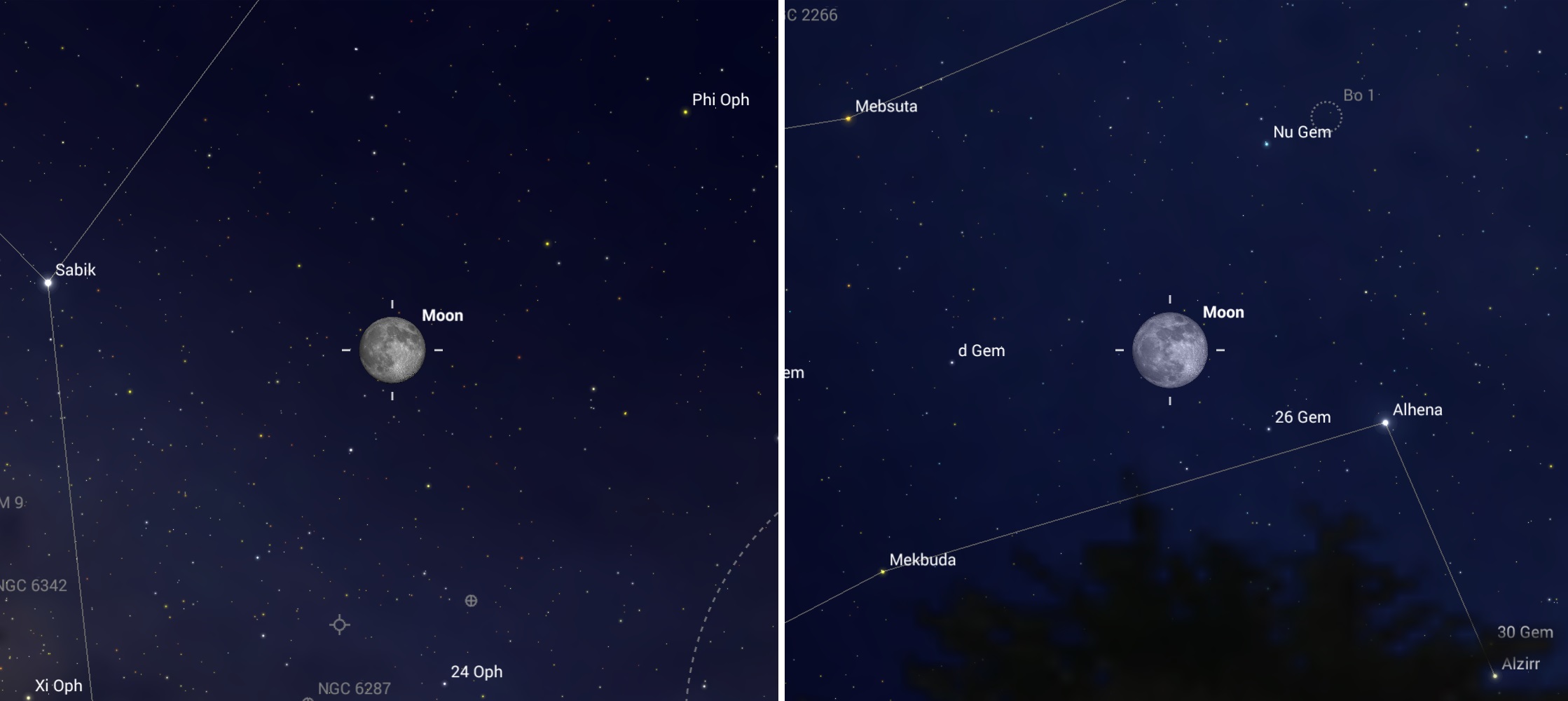
The moon's carousel causes eclipses
Earth's orbit around the sun causes the sun to travel along a great circle around the sky, called the ecliptic. The orbit can be thought of as a large, flat disk, with the sun slightly offset from the center — like the yolk of a fried egg in a flat-bottomed pan. Astronomers call this the Earth's orbital plane, and all of the planets in the solar system have orbital planes that are more or less parallel to it.
The orbital plane of the moon around Earth is tilted by 5.15 degrees with respect to the ecliptic. This causes the moon to rise and fall by about a fist's diameter as it orbits Earth, like the horses on a rotating carousel. Once every orbit, the moon climbs to a peak above the ecliptic, and two weeks later, it drops the greatest distance below it; twice per orbit, it crosses the ecliptic. Each crossing point is called a node. (Imagine taking two concentric Hula-Hoops and tilting one a little. The two spots where they still touch are the nodes.) [How to Photograph a Total Lunar Eclipse (A Moon Photo Guide)]
Get the Space.com Newsletter
Breaking space news, the latest updates on rocket launches, skywatching events and more!

The sun is always traveling eastward along the ecliptic. When it approaches one of the moon's nodes, we have the chance to experience one of two types of eclipse. If the moon crosses the dayside node when the sun is there, too, we experience a solar eclipse. But if the moon crosses the night side node instead, we experience a lunar eclipse. Solar eclipses can happen only during new moons, and lunar eclipses occur only during full moons.
You'd think eclipses that depend on such precise geometry would be rare, but the sizes of the sun, moon and Earth give us some leeway. Because the sun's and moon's disks cover one half of a degree of sky, there is a "window" of about 36 days, twice per year, when eclipses can occur. That's why eclipses can happen when the bodies aren't precisely aligned, and why each eclipse is visible from different swaths of the Earth. In fact, in any calendar year, there are at least two solar and two lunar eclipses visible somewhere on Earth. The maximum number possible in a single year is seven — a mix of the two kinds. This year, we'll have four.
Generally speaking, eclipses occur in pairs — one solar and one lunar — spaced two weeks apart (the time it takes for the moon to travel from one node to the other). This month, the Earth will experience such a pair. On Feb. 10, most of the world will see a penumbral lunar eclipse, where the moon will darken slightly as it passes through the outer reaches of Earth's shadow. Then, on Feb. 26, much of the Southern Hemisphere will see an annular solar eclipse. During this event, the moon will pass directly in front of the sun; however, the moon will be close to apogee and too small in diameter to cover it entirely, leaving a ring of sun visible. Remember that solar eclipses require special eye protection to be viewed, and lunar eclipses are always safe to look at.
You can use your astronomy app to see whether either eclipse is visible where you live. Just set the app to the appropriate date and time (evening for the lunar eclipse, and daytime for the solar eclipse) and locate and center the moon. Adjust the time in hourly increments to see whether the moon darkens (for the lunar eclipse) or if the sun is covered (for the solar eclipse). You can also try the same exercise for the total solar eclipse on Aug. 21. A terrific resource for eclipses has been created by Fred Espenak, a retired American astrophysicist who's well known for his work on eclipse predictions for NASA and several astronomical associations; his MrEclipse.com website has plenty of both basic and advanced information. [Total Solar Eclipse 2017: When, Where and How to See It (Safely)]
You can demonstrate the moon's "waltz" around the ecliptic in your astronomy app as well. In SkySafari 5, ensure that the yellow line of the ecliptic is displayed. Change the default Coordinates setting from Horizon to Ecliptic. (This will also hide the ground and daylight.) Under the Solar System settings menu, tap the box to enable Show Moon Orbits. Exit the settings, and center the app on the sun. Bring up the time controls, select the date or the hour of the day and tap to advance time forward. As you watch, the moon will move into view from the right, rising and falling along the yellow horizontal ecliptic line. You can also center your view on the moon and try it that way.
There are two more effects of the moon's up and down travels. When the nighttime ecliptic is high, as it is around the Northern Hemisphere's winter solstice on Dec. 21 annually, the moon crosses the night sky high overhead. But at times when the moon is also riding 5 degrees above the ecliptic, it's even higher. We sometimes observe extra-low moons, too. Next time you think the moon looks extra high or extra low, pull out your app and check it!
Now, we'll look at the other effect …
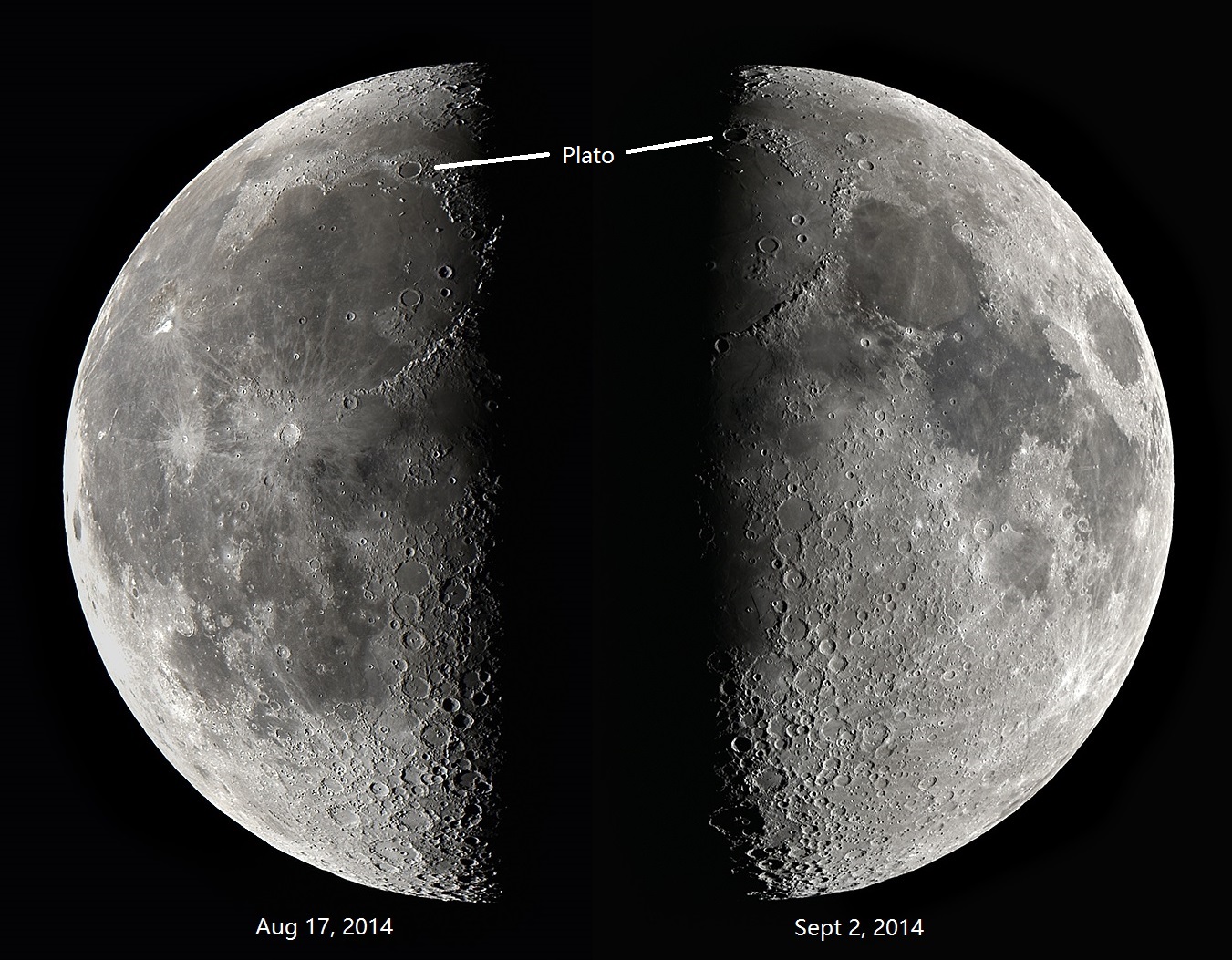
See the moon rock and roll
Due to mutual gravitational attraction between Earth and the moon over millions of years, the moon's rotation has slowed until it revolves on its axis once per orbit, keeping the same hemisphere facing toward Earth at all times. You would think that, from the surface of our planet, we can only ever see half the moon's surface. But with patience, and some knowledge about the moon's motions, it's possible to see up to 59 percent of the moon's face! The phenomenon is called libration.
Just as Earth's axis of rotation is tilted 23.5 degrees from our orbital plane, the moon's axis is tilted by almost 7 degrees. Sometimes, its northern pole is tilted a little toward us, giving us a glimpse of craters usually hidden beyond the moon's top edge. And other times, its southern pole is tilted toward us, showing us a bit more of the southern region. The moon's up-and-down travels add to the effect, letting us look "down from above" when the moon is riding below the ecliptic, and vice versa. All in all, the moon's "nodding" lets us see about 194 degrees of the moon in latitude, instead of the expected 180 degrees.
Objects with elliptical orbits move faster near perigee and slower near apogee. In the moon's case, it rotates to face us at a uniform rate but rushes faster across the sky after perigee, allowing us to see a little bit beyond its right-hand (eastern) edge. After apogee, we can see a little bit beyond the moon's left-hand (western) edge. All together, it's possible to see an extra 8 degrees of longitude on either side. Taking all of the motions into account, over the course of 28 days, the moon shows us 59 percent of its face. But because the lunar surface is not observable during the new-moon phase, it takes a few months for dedicated observers to catch all of the edges. In a future edition of Mobile Astronomy, we'll cover some of the best sights to hunt down.
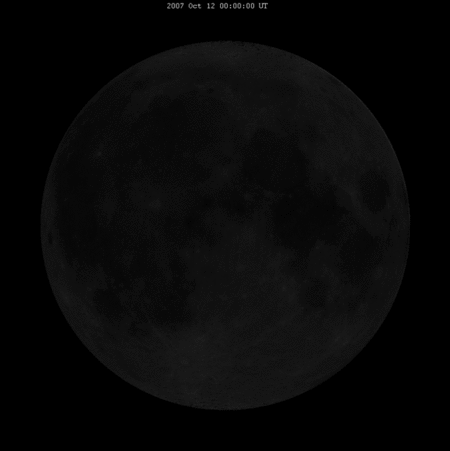
Going beyond
One day, when humans live and work on the moon, they'll be treated to a spectacular sight: Earth! Most of the motions we've covered will be seen by moon-dwelling Earth observers, too. Earth will exhibit phases on a monthly basis, grow and shrink, and even move a little bit around the lunar "sky." But the coolest sight of all will be unique to "Selenites" (moon inhabitants) — the rotation of our beautiful Earth once every 24 hours. You can preview the sight in the SkySafari 5 app. Here's how:
Open the app, and search for the moon — it doesn't need to be visible in the sky currently. Touch the Info icon, and then tap the Orbit icon. The app will zoom away from Earth and zoom in on the moon. Then, do a search for Earth, and tap Center. Earth will become centered in the app's display. You can pinch and zoom the planet to your own size preference — I like to leave a little "space" around it. Tap Time to display the time-flow control panel and touch the number representing the hour. Finally, tap the triangular flow-time-forward icon (the farthest one on the right), and watch Earth turn while the rest of the sky passes beyond it. If Earth drifts away, tap Center again.
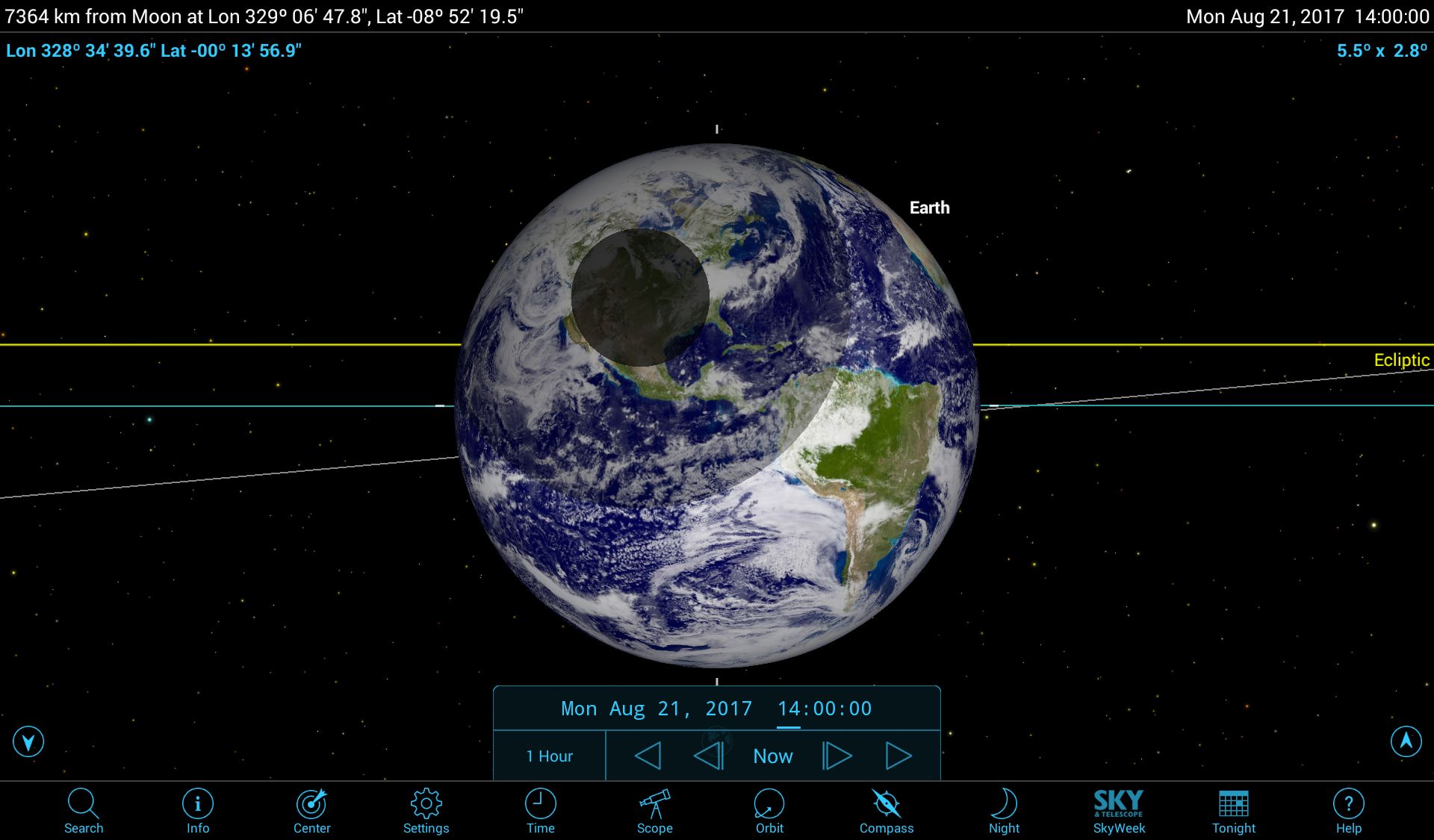
You'll see the planet rotating and the phases steadily change. The size changes, and the wobbles are easier to see with time flowing faster. Tap the date numeral to select it, and flow time again. Now, the phases will zip by, but the other effects will be more obvious. For a real treat, stop the flow of time, and manually set the date for the morning of Aug. 21, 2017. Tap the minute numeral to slow down the flow of time, and set time flowing forward. Watch carefully! After you see North America approaching the center of the globe, the moon's circular shadow will appear, slowly creeping across the planet. You're seeing the Great American Total Solar Eclipse from the vantage of an imaginary spacecraft! To see what a total lunar eclipse looks like, set the date to around 6 a.m. on Jan. 31, 2018, and watch the sun move behind Earth as you enter Earth's shadow.
In a future edition of Mobile Astronomy, we'll tell you how to plan to see the solar eclipse from your backyard. Until then, keep looking up!
Editor's note: Chris Vaughan is an astronomy public outreach and education specialist, and operator of the historic 1.88-meter David Dunlap Observatory telescope. You can reach him via email, and follow him on Twitter as @astrogeoguy, as well as on Facebook and Tumblr.
This article was provided by Simulation Curriculum, the leader in space science curriculum solutions and the makers of the SkySafari app for Android and iOS. Follow SkySafari on Twitter @SkySafariAstro. Follow us @Spacedotcom, Facebook and Google+. Original article on Space.com.
Join our Space Forums to keep talking space on the latest missions, night sky and more! And if you have a news tip, correction or comment, let us know at: community@space.com.
Chris Vaughan, aka @astrogeoguy, is an award-winning astronomer and Earth scientist with Astrogeo.ca, based near Toronto, Canada. He is a member of the Royal Astronomical Society of Canada and hosts their Insider's Guide to the Galaxy webcasts on YouTube. An avid visual astronomer, Chris operates the historic 74˝ telescope at the David Dunlap Observatory. He frequently organizes local star parties and solar astronomy sessions, and regularly delivers presentations about astronomy and Earth and planetary science, to students and the public in his Digital Starlab portable planetarium. His weekly Astronomy Skylights blog at www.AstroGeo.ca is enjoyed by readers worldwide. He is a regular contributor to SkyNews magazine, writes the monthly Night Sky Calendar for Space.com in cooperation with Simulation Curriculum, the creators of Starry Night and SkySafari, and content for several popular astronomy apps. His book "110 Things to See with a Telescope", was released in 2021.












